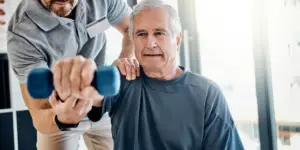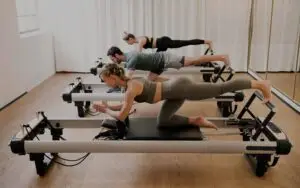1. Muscle attachments
A lot of muscles that provide stability and support to the lower back span all the way across the pelvis too. Whether you’re bending forward or twisting from side to side, it’s the muscles that attach from the pelvis to the lower back that activate to create that movement or help maintain stability of your lower back through movement.


2. Pelvic tilts
You might be familiar with the terms “anterior pelvic tilt” or “posterior pelvic tilt”. These terms are talking about the position of your pelvis in relation to your spine. Moving your pelvis into certain positions can directly influence the position of your spine.
Anterior pelvic tilt refers to when your pelvis is tilted/rotated forward, and usually increases the curve in your lower back so you end up with an increased lower back “arch”.


Posterior tilt refers to when your pelvis is rotated backwards, and usually ends up reducing the curve in your lower back, so you end up with an increased back “slump”.


3. Coordination
While changing the position of your pelvis can influence the position of your spine directly, you still need good coordination between the two. For example, if you wanted to bend forward to pick up a pen, you’d need good movement at both the lower back and pelvis to be able to fully touch your ankles. The two structures work together in coordination, this is what we call ‘lumbopelvic rhythm’.
This is an example of bending over with good rhythm from the pelvis and lower back:


This is an example of bending over if all the movement coming from your lower back and no movement from your hips/pelvis:


This is an example of bending over if you had all the movement from your pelvis/hips and none from your lower back:


The relationship across the lower back, hip and pelvis plays a really important role when it comes to movements in everyday life such as bending forward to pick something off the ground, watering plants, lifting things around the house and so much more.
I hope this helps to explain the method to the madness behind why physios examine your pelvic control, and often guide you through exercises for muscles around the hips/pelvis for back pain.





